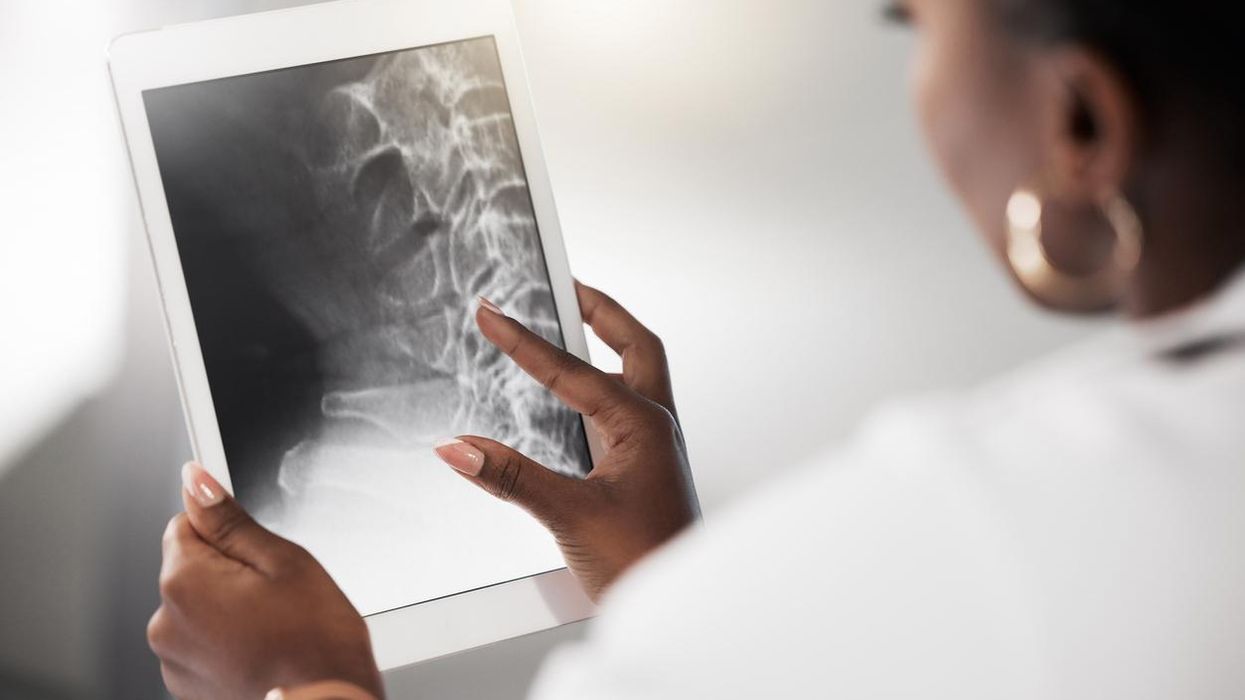This op-ed originally appeared in The Hill on October 20, 2022.
To learn more about how you can raise awareness about the importance of DXA scans for all women, visit our YesYouScan page.
America has a bone health crisis. More than 50 million Americans are at risk of developing osteoporosis, and 10 million already have the condition. A full 80 percent of those individuals are women. In fact, one in five women over 50 will get the disease during their lifetime.
Yet, despite its prevalence, osteoporosis is known as a “silent disease.” The moniker comes from the fact that people often have increasingly brittle bones prone to fracture without knowing it or feeling their bone density decrease. But the name is also apt because there is still too little awareness about osteoporosis, how to prevent or delay its onset, and what to do once it’s been diagnosed.
But on this World Osteoporosis Day, we can change that. And we must try because the consequences of osteoporosis-related fractures are severe for too many women, their families and our nation as a whole.
Our bones are made up of living tissue, which is continually being broken down and replaced. When the body loses old bone tissue more quickly than it regenerates new tissue, that’s when osteoporosis sets in. At this stage, the remaining bones can become so weak and fragile that even simple movements like stretching, twisting, bending towards the floor, coughing, bumping into something or a small fall can cause a broken bone.
These broken bones — most often of the hip and spine — are dangerously common. According to a 2021 report commissioned by the Bone Health and Osteoporosis Foundation, about 1.8 million Medicare beneficiaries suffered approximately 2.1 million osteoporotic fractures in 2016. And just last month, researchers in Hong Kong found that hip fractures will almost double around the world by 2050.
Women are especially at risk for osteoporosis and often experience rapid bone loss, particularly in the five to seven years after menopause, as their estrogen levels drop. Women may even lose up to 20 percent of their bone density in this short time frame alone. Ultimately, 50 percent of women are likely to break a bone from the disease.
Hip fractures are particularly pernicious. Women’s risk of fracturing a hip from osteoporosis is equal to the risk of breast, uterine and ovarian cancer combined. Yes, you read that right.
And that’s not all. More women die each year from complications following hip fractures than from breast cancer. Among women over 50 who break a hip, 25 percent die in the year following their injury, while 50 percent never walk independently again and 20 percent must permanently move to a nursing home. All told, those osteoporotic fractures cause more hospitalizations and greater healthcare costs than heart attack, stroke or breast cancer in women 55 and older.
The economic burdens of this disease are significant, too. The total yearly expense of providing care for Medicare beneficiaries who suffer osteoporotic fractures was estimated at $57 billion in 2018. That number includes direct medical costs as well as indirect societal costs that come from lost productivity and informal caregiving. These costs are expected to balloon to more than $95 billion in 2040. With America’s aging population, this should alarm everyone.
But it doesn’t have to be this way. Managing osteoporosis is well within our capabilities. We know that diets rich in calcium and vitamin D can help keep bones strong. Avoiding caffeine, excess salt, alcohol and smoking — all of which can either contribute to bone loss or increase the risk of fracture — is essential. Weight-bearing and muscle-strengthening exercise is critical, too. In fact, strength training can actually both temper and delay bone loss as well as build bones back stronger.
But those aren’t our only tools. Preventive bone density scans, or dual-energy x-ray absorptiometry scans (DXA for short), are easy, painless and inexpensive. They are also incredibly effective. DXA scans can better predict broken bones than cholesterol testing can predict heart attacks or taking someone’s blood pressure can predict a stroke. As it turns out, Medicare beneficiaries who have a DXA bone density test suffer 35 percent fewer hip fractures and 22 percent fewer fragility fractures.
The trouble is too few people who are at risk for osteoporosis are getting these scans. In 2007, Medicare cut its reimbursement for scans done in a doctor’s office and there has been a drastic drop in the number of patients receiving them ever since. According to the Fracture Prevention Coalition, the reduced access to DXA scans conveniently performed in a doctor’s office since 2008 has meant that 7 million fewer women had their bone density tested. This number will only increase unless something is done.
These alarming statistics are why it is absolutely critical for Congress to pass H.R. 3517, the Increasing Access to Osteoporosis Testing for Medicare Beneficiaries Act of 2021, without delay. This bill will increase access to DXA scans for Medicare beneficiaries by reinstating Medicare funding for the procedure. When patients are more quickly and accurately diagnosed and treated, they will be better equipped to take care of themselves and their long-term health. Increased testing will also lower our country’s astronomical healthcare costs by reducing the number of avoidable osteoporotic fractures.
The millions of people, and women in particular, for whom osteoporosis is such a serious risk, cannot wait any longer for this bill. Their health, and often their lives, depend on it.










